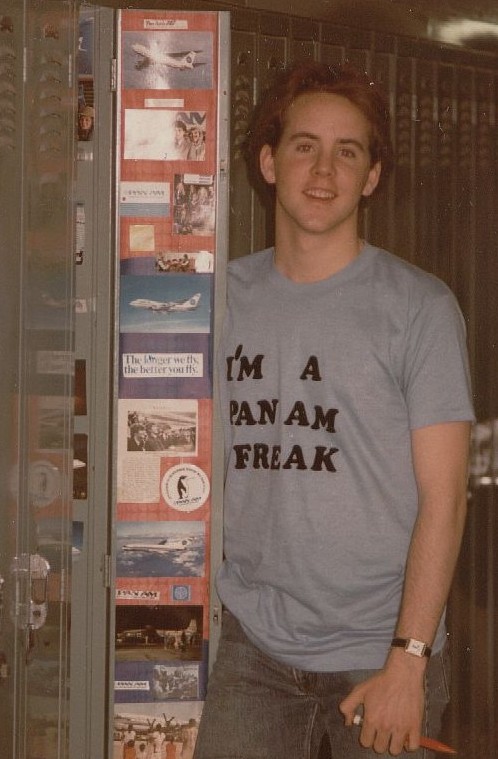This page is the personal account of
Web Master Kelly Cusack
Part One: Getting to Pan Am
Web Master Kelly Cusack
Part One: Getting to Pan Am
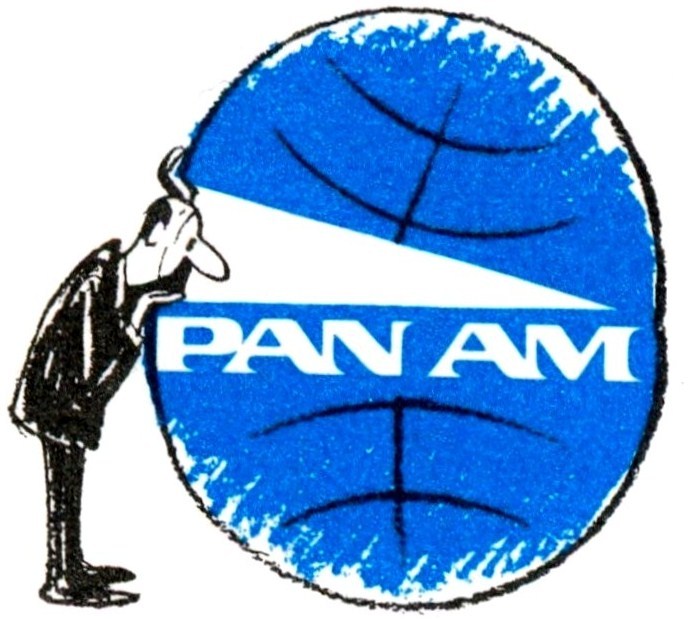
everythingPanAm.com
The Virtual Pan Am Museum
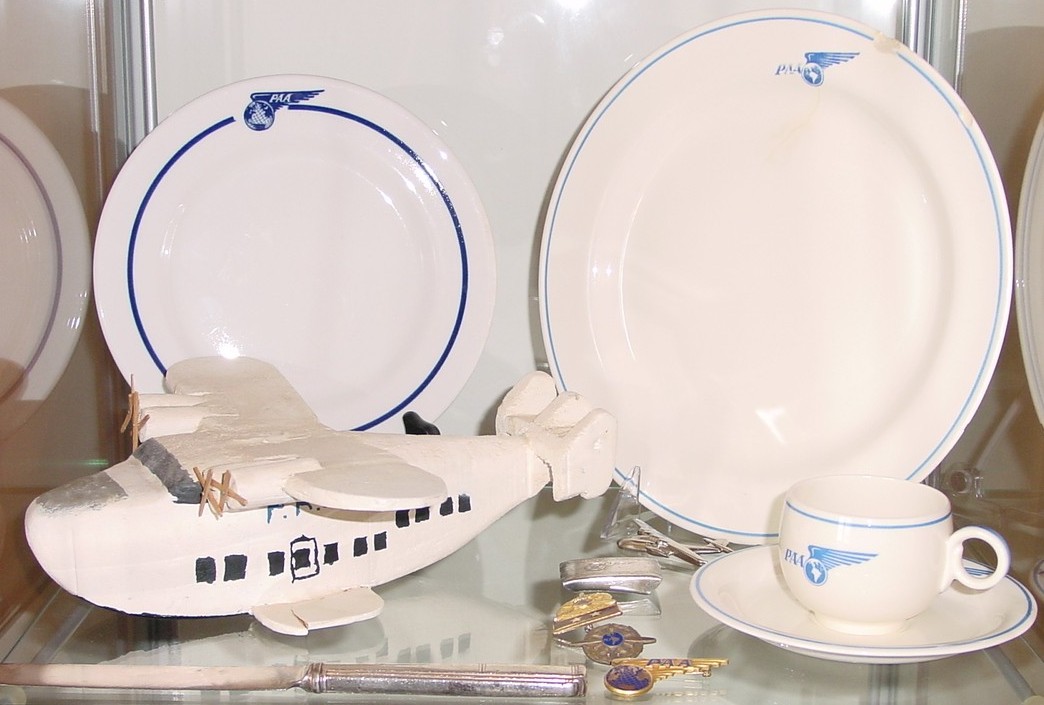
I was born in Washington DC in January of 1962. My parents were in Washington on home leave from Rome, Italy where my father was on assignment for the United States Government.
My father returned to Rome soon after my birth but my first flight on Pan Am didn’t happen until June of 1962 when my mother & I flew back to Rome to join him. At the time my father was a frequent flyer with Pan Am as he traveled around Europe & the Middle East for his work. When he put out the word that his wife and new baby would be arriving from New York the Pan Am staff turned out to welcome us. The telling of the story of my first trip to Rome always included a mention of how Pan Am Special Service Representative Rosanna Giordano carried me off the plane in Rome.
Over the next few years our family was transferred to other corners of the globe including Kansas City & Australia. Another family legend was of my first trip to Sydney where a sleepless toddler (read: me) crawled up & down the aisle of a Pan Am 707 in the wee hours of the morning and cranky stewardesses begged the mother to “control your baby.” This event took place before flight attendants could marry & have children so that particular crew’s empathy level may have been low. At least that’s what I’d like to think.
In 1967 we were living in Washington DC when my father was given a temporary duty assignment in Ankara, Turkey. In order not to offend our neighbor in Washington who worked for TWA we flew TWA from Washington to London (though Pan Am offered the same service). Once in London we switched to the Pan Am round the world flight onward to Istanbul and finally Turkish Airlines onward to Ankara. Though everybody was perfectly nice on TWA there was just something about Pan Am that appealed more to this five year old and that’s how “it” (whatever “it” is) all started. I was hooked on Pan Am.
In 1968 while on home leave my mother took me to New York. To the right is a picture of my first visit to the Empire State building. The view was quite impressive but what really caught my eye was the Pan Am building. In the picture I am holding a “giant” souvenir pencil with various New York landmarks depicted on the pencil. One of those landmarks was the Pan Am building and I insisted that my mother take a picture of me holding my “Pan Am” pencil with the Pan Am building in the background.
My father returned to Rome soon after my birth but my first flight on Pan Am didn’t happen until June of 1962 when my mother & I flew back to Rome to join him. At the time my father was a frequent flyer with Pan Am as he traveled around Europe & the Middle East for his work. When he put out the word that his wife and new baby would be arriving from New York the Pan Am staff turned out to welcome us. The telling of the story of my first trip to Rome always included a mention of how Pan Am Special Service Representative Rosanna Giordano carried me off the plane in Rome.
Over the next few years our family was transferred to other corners of the globe including Kansas City & Australia. Another family legend was of my first trip to Sydney where a sleepless toddler (read: me) crawled up & down the aisle of a Pan Am 707 in the wee hours of the morning and cranky stewardesses begged the mother to “control your baby.” This event took place before flight attendants could marry & have children so that particular crew’s empathy level may have been low. At least that’s what I’d like to think.
In 1967 we were living in Washington DC when my father was given a temporary duty assignment in Ankara, Turkey. In order not to offend our neighbor in Washington who worked for TWA we flew TWA from Washington to London (though Pan Am offered the same service). Once in London we switched to the Pan Am round the world flight onward to Istanbul and finally Turkish Airlines onward to Ankara. Though everybody was perfectly nice on TWA there was just something about Pan Am that appealed more to this five year old and that’s how “it” (whatever “it” is) all started. I was hooked on Pan Am.
In 1968 while on home leave my mother took me to New York. To the right is a picture of my first visit to the Empire State building. The view was quite impressive but what really caught my eye was the Pan Am building. In the picture I am holding a “giant” souvenir pencil with various New York landmarks depicted on the pencil. One of those landmarks was the Pan Am building and I insisted that my mother take a picture of me holding my “Pan Am” pencil with the Pan Am building in the background.
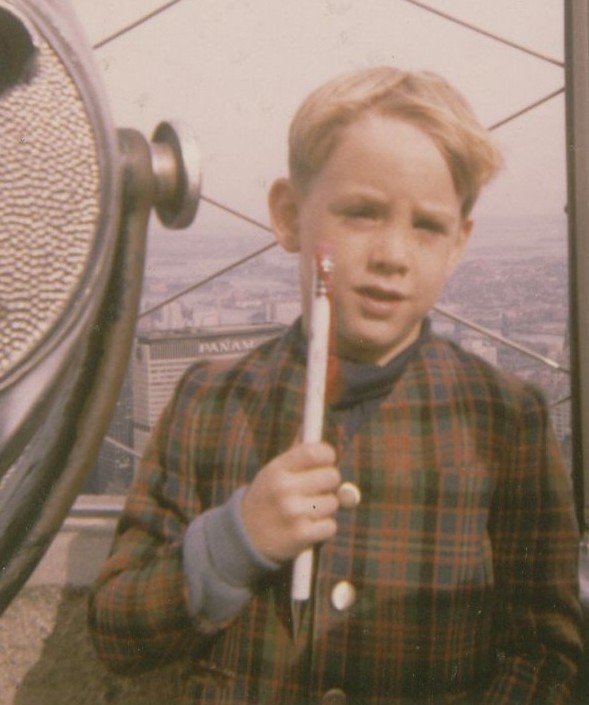
In the Fall of 1969 our family transferred from Turkey to Paris, France. While living in Paris we visited Rome in early 1971. Several months earlier Pan Am had extended 747 service from Paris to Rome on flight 114 and I was excited to learn that our trip would be on a Pan Am 747. I counted down the last two weeks prior to the trip and could hardly sleep the night before. My first 747 flight was thrilling. I was eight years old. I clearly remember boarding in the front of economy class and walking and walking to get to our seats located near the back of the plane. As we passed from cabin to cabin even my mother rhetorically asked how such a huge plane could ever get off the ground.
My family returned to Washington DC in 1972 and lived there continuously until I went off to college. In 7th grade an assignment in wood working class required that each student make an item having to do with either transportation or communication. Some of my classmates made lamps in the shape of traffic lights or wooden trains and boats. One of the guidelines of the project was that there could be no duplications. Having a “C” last name I thought I was in pretty good shape to elect to build a wooden plane as the teacher went down the class list and asked each student what they were going to build. I sat quietly debating in my head whether I would build a Pan Am 707 or 747. Much to my despair the boy one name ahead of me on the class list announced he was going to build a Braniff 727. Gulp, thinking fast I asked if a propeller plane was sufficiently different as to be allowed. My request was pondered for several seconds and then granted. However, I now had to figure out what to build….as I had never been on a Pan Am piston plane.
My family returned to Washington DC in 1972 and lived there continuously until I went off to college. In 7th grade an assignment in wood working class required that each student make an item having to do with either transportation or communication. Some of my classmates made lamps in the shape of traffic lights or wooden trains and boats. One of the guidelines of the project was that there could be no duplications. Having a “C” last name I thought I was in pretty good shape to elect to build a wooden plane as the teacher went down the class list and asked each student what they were going to build. I sat quietly debating in my head whether I would build a Pan Am 707 or 747. Much to my despair the boy one name ahead of me on the class list announced he was going to build a Braniff 727. Gulp, thinking fast I asked if a propeller plane was sufficiently different as to be allowed. My request was pondered for several seconds and then granted. However, I now had to figure out what to build….as I had never been on a Pan Am piston plane.
Of to the library I went and called upon assistant librarian Mrs. Ryan to help me find some information on piston planes. Mrs. Ryan was from New York, had a biting sense of humor and didn’t suffer foolish kids….at all. However, she liked me and I liked her. By happy coincidence her son was a pilot and had sent her a booklet about Boeing Aircraft. I didn’t get too far into the booklet when I found the Boeing 314 “Yankee Clipper” the final and most magnificent of Pan Am’s flying boats. I instantly knew what I would be building in wood working class.
As our woodworking projects progressed there was lots of idle chatter while we sawed, glued, sanded & painted. In the process I discovered that the young man building the Braniff 727 planned to become an air traffic controller when he finished school. Again, not to be outdone I declared that I was going to work for Pan Am when I grew up. I don’t know if Donald ever became an air traffic controller but I do know that I did go to work for Pan Am. The picture to the left is of my flying boat. I have kept it through the years in a place of honor (surrounded by actual flying boat china plates) to remind me how it all began.
As our woodworking projects progressed there was lots of idle chatter while we sawed, glued, sanded & painted. In the process I discovered that the young man building the Braniff 727 planned to become an air traffic controller when he finished school. Again, not to be outdone I declared that I was going to work for Pan Am when I grew up. I don’t know if Donald ever became an air traffic controller but I do know that I did go to work for Pan Am. The picture to the left is of my flying boat. I have kept it through the years in a place of honor (surrounded by actual flying boat china plates) to remind me how it all began.
The thing about me (as any of my family or friends will tell you) is that once I get an idea in my head I follow through. My motto has always been, any obsession worth doing is worth overdoing! So, from 7th grade on Pan Am became my principle hobby. To the right is a picture of my high school locker and a T-shirt given to me by a friend.
In the summer of 1976 I was fourteen. My mother knew that my father had a three week business trip to Asia and she thought I should go with him. Not only would this be my first trip to Asia but it would be a chance to fly Pan Am’s new 747SP from New York, JFK to Tokyo. I was thrilled as our itinerary would include 4 legs on Pan Am. I guess that was the trip where I began collecting Pan Am memorabilia. Each trip to the lavatory yielded another bar of soap. Each beverage was one more drink stirrer and plastic cup and each meal was one more salt, pepper & sugar packet. Then there were the Clipper Magazines (John Wayne was on the cover in July of 1976) the safety cards (yes, I know you’re not supposed to take them) the playing cards, post cards, kiddy wings, head sets and other miscellaneous items. It was amazing I could lift my suitcase by the time we arrived back home!
As a young man my father had a great interest in boats and he was always very supportive and understanding of my interest in commercial aircraft & Pan Am. In 1976 soon after returning from Asia my father discovered that one of his colleagues was friendly with Pan Am’s Washington Dulles Airport station manager, Stu Wooster. A few calls were made to see if there might be any summer or part time jobs at Pan Am. Due to work rules Pan Am couldn’t hire anyone younger than 18 and I was only 14. However, Stu Wooster & his staff, Marjorie Nunn & Dave Young were very nice and came up with the idea of an internship. It was agreed that I would spend a few days in August having at Washington Dulles on an internship. I was thrilled.
In the summer of 1976 I was fourteen. My mother knew that my father had a three week business trip to Asia and she thought I should go with him. Not only would this be my first trip to Asia but it would be a chance to fly Pan Am’s new 747SP from New York, JFK to Tokyo. I was thrilled as our itinerary would include 4 legs on Pan Am. I guess that was the trip where I began collecting Pan Am memorabilia. Each trip to the lavatory yielded another bar of soap. Each beverage was one more drink stirrer and plastic cup and each meal was one more salt, pepper & sugar packet. Then there were the Clipper Magazines (John Wayne was on the cover in July of 1976) the safety cards (yes, I know you’re not supposed to take them) the playing cards, post cards, kiddy wings, head sets and other miscellaneous items. It was amazing I could lift my suitcase by the time we arrived back home!
As a young man my father had a great interest in boats and he was always very supportive and understanding of my interest in commercial aircraft & Pan Am. In 1976 soon after returning from Asia my father discovered that one of his colleagues was friendly with Pan Am’s Washington Dulles Airport station manager, Stu Wooster. A few calls were made to see if there might be any summer or part time jobs at Pan Am. Due to work rules Pan Am couldn’t hire anyone younger than 18 and I was only 14. However, Stu Wooster & his staff, Marjorie Nunn & Dave Young were very nice and came up with the idea of an internship. It was agreed that I would spend a few days in August having at Washington Dulles on an internship. I was thrilled.
In the summer of 1976 Pan Am had up to 4 aircraft movements per day at Dulles. On Monday, Wednesday & Friday the first arrival of the day was flight 541 a 707 from New York, JFK with a scheduled arrival of 12:50pm local. The flight continued on to Guatemala City, Guatemala, and San Jose, Costa Rica. Because Pan Am did not yet have domestic route authority the flight could only pick-up customers continuing onto Central America and had a transit time of 15 minutes. In 1976 customers were transported from the terminal to aircraft via mobile lounges. With careful coordination passengers could be standing by in the mobile lounges when the aircraft taxied up to the parking ramp and quickly boarded.
The second arrival in the schedule was flight 107. This daily flight originated as a 727-100 in Berlin, transited Hamburg and connected to a 747 at London, Heathrow. Flight 107 would then depart Heathrow at 10:40am local with a 2:00pm local arrival time into Washington. Upon arrival all customers deplaned for US Customs. This aircraft was then cleaned, lightly catered and fueled to originate as flight 66 outbound to New York, JFK and onward to Frankfurt and other points in Eastern Europe including Warsaw, Budapest, Prague, Belgrade & Bucharest depending on the day of the week. The beyond Frankfurt flights were also operated with Boeing 727-100 equipment from Pan Am’s Berlin based fleet. The 6:15 pm departure also enabled Washington DC originating customers to make convenient connections to Pan Am’s other European departures at JFK.
The second arrival in the schedule was flight 107. This daily flight originated as a 727-100 in Berlin, transited Hamburg and connected to a 747 at London, Heathrow. Flight 107 would then depart Heathrow at 10:40am local with a 2:00pm local arrival time into Washington. Upon arrival all customers deplaned for US Customs. This aircraft was then cleaned, lightly catered and fueled to originate as flight 66 outbound to New York, JFK and onward to Frankfurt and other points in Eastern Europe including Warsaw, Budapest, Prague, Belgrade & Bucharest depending on the day of the week. The beyond Frankfurt flights were also operated with Boeing 727-100 equipment from Pan Am’s Berlin based fleet. The 6:15 pm departure also enabled Washington DC originating customers to make convenient connections to Pan Am’s other European departures at JFK.
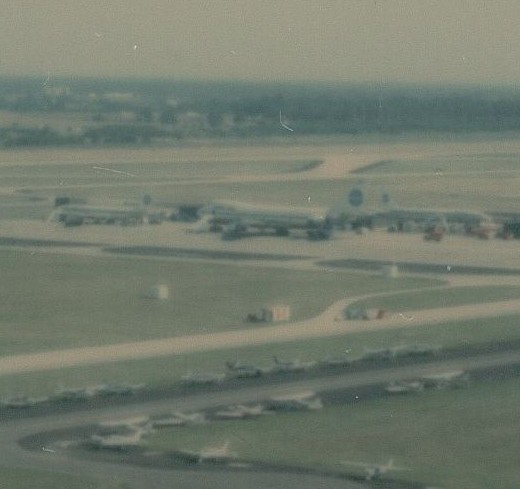
The third arrival in the schedule was flight 542 a 707 northbound from Central America and Guatemala which also operated on Monday, Wednesday & Friday with a scheduled arrival time of 4:25 pm. The US Customs regulations of the time required all customers to deplane and clear Customs in Washington even if they were continuing onto New York. Customers would reboard for a 5:40pm departure. However, because the flight was an international flight “in progress” no local traffic could be boarded to connect in New York to other Pan Am international destinations. For that reason Pan Am had flight 66 originate in Washington as the leg to New York had not crossed any international boarders and could carry customers to New York to connect to other Pan Am flights.
The final arrival in the schedule was Pan Am flight 67 a 747 inbound from New York, JFK. The flight operated daily originating in Eastern Europe (same cities as listed for flight 66 above) with a 727-100 and connected to a 747 in Frankfurt for the non-stop flight to New York and then onward to Washington. Flight 67 was scheduled to arrive at Dulles at 5:10pm local. The flight terminated in Washington. The aircraft was then cleaned, completely catered and fueled and originated as flight 106 nonstop to London Heathrow at 8:30pm local. Once in London onward customers would transfer to a 727-100 and flight 107 would continue on to Hamburg & Berlin. The photo on the left was taken in the summer of 1976 from the Dulles Airport control tower. It shows flight 107 (747) and flight 542 (707 in front of the 747) on the ramp. The 707 behind the 747 is a charter flight..
The final arrival in the schedule was Pan Am flight 67 a 747 inbound from New York, JFK. The flight operated daily originating in Eastern Europe (same cities as listed for flight 66 above) with a 727-100 and connected to a 747 in Frankfurt for the non-stop flight to New York and then onward to Washington. Flight 67 was scheduled to arrive at Dulles at 5:10pm local. The flight terminated in Washington. The aircraft was then cleaned, completely catered and fueled and originated as flight 106 nonstop to London Heathrow at 8:30pm local. Once in London onward customers would transfer to a 727-100 and flight 107 would continue on to Hamburg & Berlin. The photo on the left was taken in the summer of 1976 from the Dulles Airport control tower. It shows flight 107 (747) and flight 542 (707 in front of the 747) on the ramp. The 707 behind the 747 is a charter flight..
The first day of my internship was spent with Bill Pilchuk in the Maintenance Department. Bill was a very nice man and we became fast friends. He appreciated my enthusiasm for Pan Am and I would go back to visit him many times over the next few years during my time in high school. It was through Bill that I met Felicia Fairchild of the Aware Committee and secured my first job with Pan Am. Bill departed this world much too early but I will always remember his kindness to an overly enthusiastic kid who wanted a job at Pan Am. To the right Bill examines the intercom system in the first class section of a 747.
The second day of my internship was spent with the wonderful people from Clipper Cargo. In spite of my self taught knowledge of Pan Am I had never really considered the importance of air freight to an airline. At the time Pan Am was the largest air cargo airline in the world and operated a dedicated cargo fleet of 707 & 747 aircraft. While Pan Am did move cargo on the 4 aircraft that operated into Dulles the company also operated a daily 18 wheeler freight truck to move freight to & from New York. As a 14 year old I found this quite curious but later came to understand the practical considerations. Regardless, I would occasionally spot the cargo truck on the highway between Washington & New York when my family traveled to visit family and felt that I was part of a select group of people who knew where the truck was coming from and going to.
My day with Clipper Cargo included a full tour of the inbound and outbound cargo staging areas. At the end of the day I was presented with a 747 cargo model. It was one of the best gifts I ever got. It is still in my collection and can be seen below on the black stand.
The second day of my internship was spent with the wonderful people from Clipper Cargo. In spite of my self taught knowledge of Pan Am I had never really considered the importance of air freight to an airline. At the time Pan Am was the largest air cargo airline in the world and operated a dedicated cargo fleet of 707 & 747 aircraft. While Pan Am did move cargo on the 4 aircraft that operated into Dulles the company also operated a daily 18 wheeler freight truck to move freight to & from New York. As a 14 year old I found this quite curious but later came to understand the practical considerations. Regardless, I would occasionally spot the cargo truck on the highway between Washington & New York when my family traveled to visit family and felt that I was part of a select group of people who knew where the truck was coming from and going to.
My day with Clipper Cargo included a full tour of the inbound and outbound cargo staging areas. At the end of the day I was presented with a 747 cargo model. It was one of the best gifts I ever got. It is still in my collection and can be seen below on the black stand.
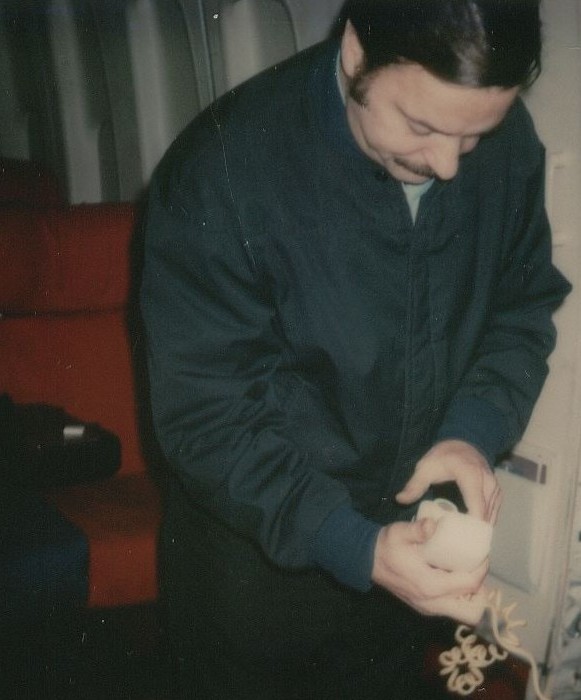
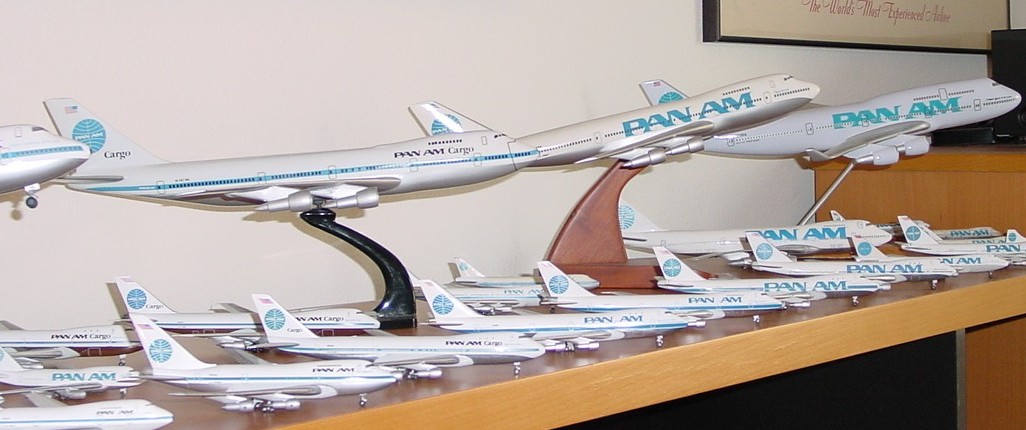
The third day of my internship was spent with the Passenger Service Department in the care of Carol Statfield. It was facinating to see the check-in process from the other side of the counter. Carol was lots of fun and I remember laughing a lot in her company. It was especially fun to watch Carol check-in First Class customers who traveled on flight 106 to London. I could only imagine how wonderful it would be to fly First Class but watching check-in was the next best thing. Below on the left is the Pan Am ticket at Dulles Airport in the summer of 1976.
The final day of my internship was spent with Glen Tally & the operations department. The guys in operations were great. They tried and tried to explain to me about weight & balance but my 14 year old brain just couldn’t get it (not sure I could do much better even today). All I wanted to know was how many gallons of fuel could a 747 hold. This was not a simple question either as Pan Am loaded fuel in pounds. A calculator was found and eventually I got an approximate figure…that I no longer recall. Still, it was exciting to hear the radio squawk as the aircraft came and went. Additionally, the pilots would come into operations to create their flight plans. They looked very impressive in their black suits and white caps. Below on the right I pose for a picture in the upper deck galley of a 747 during my one week internship.
The final day of my internship was spent with Glen Tally & the operations department. The guys in operations were great. They tried and tried to explain to me about weight & balance but my 14 year old brain just couldn’t get it (not sure I could do much better even today). All I wanted to know was how many gallons of fuel could a 747 hold. This was not a simple question either as Pan Am loaded fuel in pounds. A calculator was found and eventually I got an approximate figure…that I no longer recall. Still, it was exciting to hear the radio squawk as the aircraft came and went. Additionally, the pilots would come into operations to create their flight plans. They looked very impressive in their black suits and white caps. Below on the right I pose for a picture in the upper deck galley of a 747 during my one week internship.
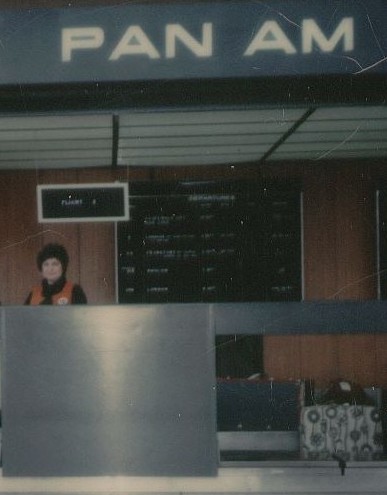
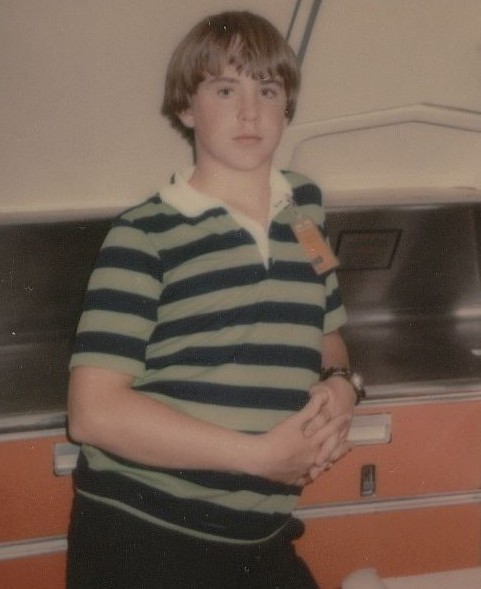
Though I was sorry to see my internship end I kept in touch with several people I met and through Bill Pilchuk of Maintenance and in January of 1979 was introduced to Felicia Fairchild the Chairman of the Aware Committee.
The Aware Committee (Airman Worried About Retaining Employment) had been created in the early 1970s during the first fuel crisis by a group of Berlin based pilots to rally internal support for Pan Am as well as petition travel agents and politicians to support Pan Am. The organization had become quite popular & successful. Felicia Fairchild was a flight attendant who became involved with the organization and eventually was elected Chairman.
I met Felicia at a rally in Washington for the then proposed Pan Am - National merger. I was 17 and still too young to be hired by Pan Am. However, Felicia agreed that if I could get to New York over the summer she would put me to work as a volunteer in the Aware Office of the Pan Am Building. Plans were put in place and I spent a wonderful month in New York with Felicia and the other members of the Aware Committee.
Felicia was an intelligent, wise, candid and fun mentor. In addition to assigning me various projects Felicia also arranged meetings and introductions with representatives of various departments in the Pan Am building so I could learn more about how the airline operated. She encouraged me to think about what I would like to do at Pan Am when I finished college. Below on the left Felicia & I talk in her office on the 9th Floor of the Pan Am Building.
My day to day experience at the Aware Committee was overseen by Jill L’Eplatenier. Jill was the Aware Committee Office Manager and interacted with departments and stations all around the world. As I had never worked in an office I relied heavily on Jill for direction & coaching. She was wonderful and we are friends to this day. Below on the right Jill & I pose by a poster of Pan Am aircraft.
The Aware Committee (Airman Worried About Retaining Employment) had been created in the early 1970s during the first fuel crisis by a group of Berlin based pilots to rally internal support for Pan Am as well as petition travel agents and politicians to support Pan Am. The organization had become quite popular & successful. Felicia Fairchild was a flight attendant who became involved with the organization and eventually was elected Chairman.
I met Felicia at a rally in Washington for the then proposed Pan Am - National merger. I was 17 and still too young to be hired by Pan Am. However, Felicia agreed that if I could get to New York over the summer she would put me to work as a volunteer in the Aware Office of the Pan Am Building. Plans were put in place and I spent a wonderful month in New York with Felicia and the other members of the Aware Committee.
Felicia was an intelligent, wise, candid and fun mentor. In addition to assigning me various projects Felicia also arranged meetings and introductions with representatives of various departments in the Pan Am building so I could learn more about how the airline operated. She encouraged me to think about what I would like to do at Pan Am when I finished college. Below on the left Felicia & I talk in her office on the 9th Floor of the Pan Am Building.
My day to day experience at the Aware Committee was overseen by Jill L’Eplatenier. Jill was the Aware Committee Office Manager and interacted with departments and stations all around the world. As I had never worked in an office I relied heavily on Jill for direction & coaching. She was wonderful and we are friends to this day. Below on the right Jill & I pose by a poster of Pan Am aircraft.
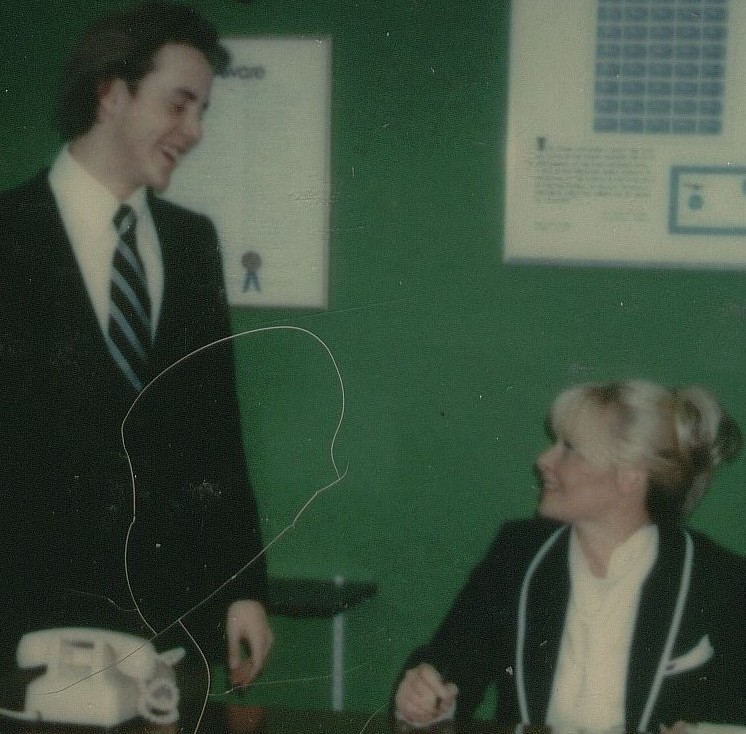
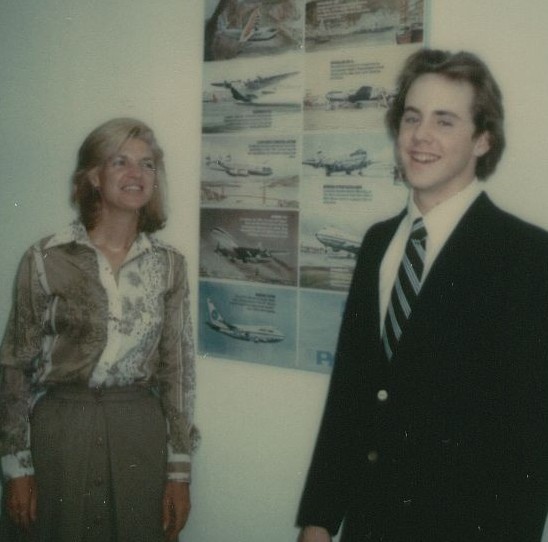
The month went by far too quickly. After leaving I maintained contact with friends at Aware and other Pan Am departments. I turned eighteen in January of 1980 and it was soon time to begin the campaign for a “real” job at Pan Am for the summer of 1980.
In the summer of 1980 there were 5 positions for Passenger Service Agents at JFK. I flew up to New York to meet with Passenger Service Manager, Trenton Fleming. Trenton could see my obvious enthusiasm and hired me. I went to Passenger Service training the week after I graduated high school!
In the summer of 1980 there were 5 positions for Passenger Service Agents at JFK. I flew up to New York to meet with Passenger Service Manager, Trenton Fleming. Trenton could see my obvious enthusiasm and hired me. I went to Passenger Service training the week after I graduated high school!
